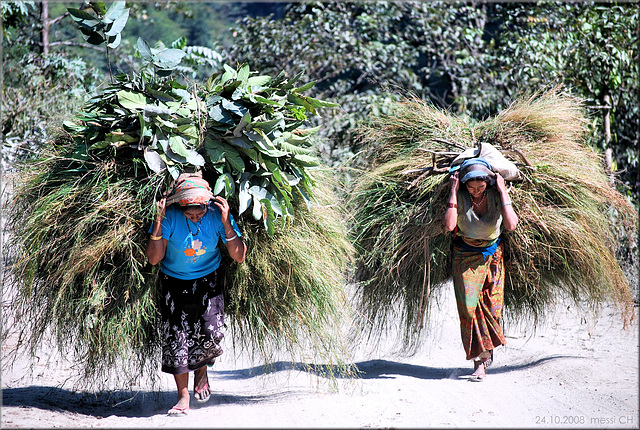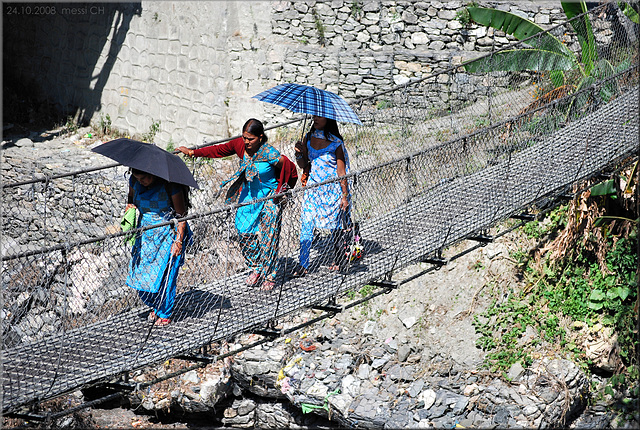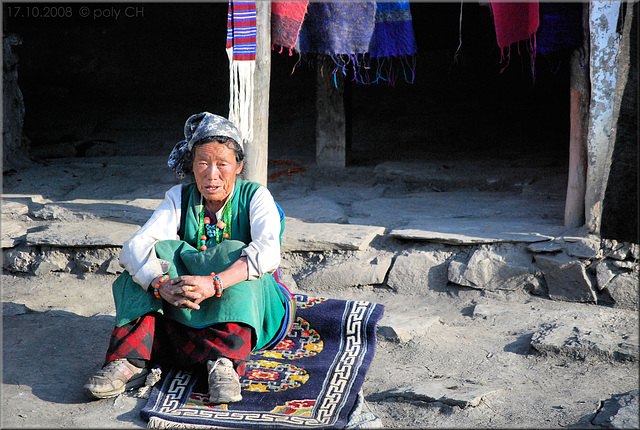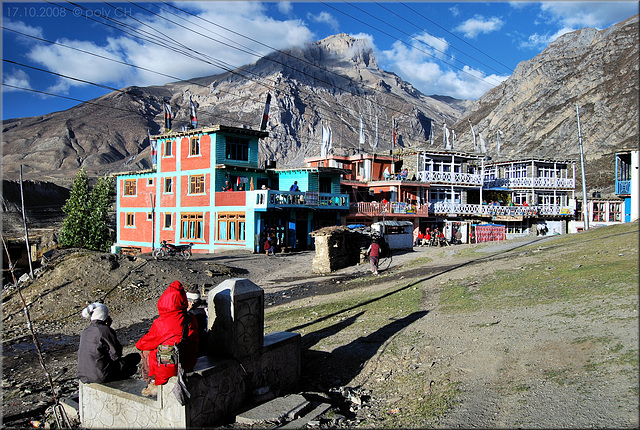
Nepal
hard working (see also PiP)
Nepal – bei Galeshwor
PIP für ► Bild.
(28.3768, 83.5752); [30°]
three of a kind
Nepal – suspension bridge at Galeshwor.
– HFF –
➽ PIP: women at work.
(28.37582, 83.56797); [00°]
Machapuchare
Machapuchare (6'993m) in the early morning from Pokhara, Nepal.
The Machapuchare ("Fishtail") belongs to the Annapurna massif.
=> Wikipedia
█► Sunday, 30.04.2017 – Ueli Steck the famous Swiss rock climber died at the Nuptse, near Mount Everest. ◄█
=> Ueli Steck – Wikipedia
=> YouTube – The Everest-Lhotse Project 2017
=> YouTube – in the news
=> YouTube – a tribute
(28.20455, 83.96436); [00°]
Muktinath market
Nepal – Muktinath
Sie hat mir ➽ diese Socken gestrickt.
(28.81623, 83.86491); [00°]
Victorinox "Altimeter"
Nepal – Thorong La
5'416 m.ü.M.
The Victorinox "Altimeter" in action.
(28.79357, 83.93842) – OpenTopoMap
Nepal – Thorong La
Nepal – Near Thorong La Pass (5'416 m)
Translation: "Thunder Pass".
The crossing of Thorong La is technically harmless under normal weather conditions (you never have to hold on the rock). The only realistic objective danger is the crossing of a rockfall area about 50 m wide about one hour before Thorong Phedi (the valley base on the east side) at about 4'000 m.
Tibetan prayer flags usually have the colors blue, white, red, green and yellow with the sequence from left to right or in the case of flags hung in a star shape from the inside to the outside.
The number five plays a central role in Tibetan Buddhism and embodies the four cardinal points as well as the center. The colors stand for one element each:
- Blue for emptiness (the space, the sky).
- White for the air (the clouds, the wind)
- Red for the fire
- Green for the water
- Yellow for the earth element.
The flags are exposed to the wind until they are completely weathered, so that, according to the belief of the faithful, the prayers written on them are carried to heaven.
► Gudrun
(28.7955, 83.9339) – OpenTopoMap
Nepal – Muktinath
Nepal – Muktinath (3'700 m)
Muktinath / Ranipauwa (in the district of Mustang) is the starting point for crossing the Thorung La Pass (5'416 m) from the west side.
The village itself is hardly attractive, few traditional buildings are dominated by numerous modern hotel and restaurant buildings, which were built in the last years. The infrastructure is simple, access roads and the local road are not paved, the power supply is only conditionally reliable.
In nearby Jharkot Monastery, children receive schooling and training in classical Tibetan medicine from Buddhist monks (for 14 years). The children live there in a kind of boarding school.
(28.81585, 83.86392); [60°] – OpenTopoMap
porters in rest position.
Nepal – Muktinath (3'700 m)
After hours of marching with weights of up to 80, 100 kg, the porters take breaks in this position in order to stretch their back properly.
Some of the porters wear proper shoes, but others do their job in slippers (see comment)!
(28.81535, 83.86220) – OpenTopoMap
heavy load (2 PiPs)
Nepal – Porter in Larjung.
The village of Kobang / Larjung is located at an altitude of 2550 m on the western bank of the river Kali Gandaki in the south of the district. Kowang borders Lete in the south and Tukuche in the north. The village is located at the Annapurna Circuit on the road to Jomsom 20 km further north.
The Sherpa ("Eastern people") are a people who immigrated to the central and southern Himalayas 300 to 400 years ago. The name of the people comes from Tibetan: "shar" means "East", and the suffix "pa" means "people". The female form is Sherpani (plural Sherpanis). Today there are about 180'000 Sherpas. They live mainly in eastern Nepal and in the border regions of China and India. Most of them are Buddhist and speak a language that is unique to their culture, which is also called Sherpa.
Since many porters are recruited from the Sherpa people, the porters are often simply called 'Sherpa', although there are porters from other peoples as well.
(28.68595, 83.61442); [210°] – Google Maps
Jump to top
RSS feed- Latest items - Subscribe to the latest items added to this album
- ipernity © 2007-2024
- Help & Contact
|
Club news
|
About ipernity
|
History |
ipernity Club & Prices |
Guide of good conduct
Donate | Group guidelines | Privacy policy | Terms of use | Statutes | In memoria -
Facebook
Twitter










